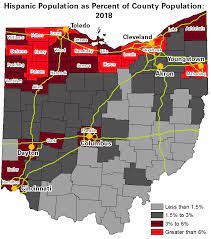
This article highlights current issues in the United States with children of immigrants living under the poverty line. Specifically, the article shares the stories of two families, the Acevedos and the Garcias, living in Nashville, Tennessee. The Acevedos are undocumented and earn only $26,000 a year. Their daughter Jacqueline was born in the US. If the Acevedos were all US citizens, they could receive $12,000 in tax credits, but since they are undocumented they only get a quarter of that. The Garcias are legal immigrants with a high level of education, however their lack of English has brought them into poverty in the US, and makes learning about welfare programs difficult.
The main theme of the article is that poverty is extremely prevalent among children of immigrants, and that there is a lack of consistency in government welfare and aid for these children. 40% of the children living in poverty in the US have immigrant parents. The article seems to be in favor of the immigrant families, although it does explain multiple viewpoints behind the issue; those who think the government should invest in these children, and those who do not. Generally the depiction of the immigrants is good, as the author explains their individual stories in order to humanize them for the reader.
There is a lot of quantitative evidence used in the article. Most of it is statistics on child poverty, such as that the poverty rate for children of immigrants was 20.1% before the pandemic, while it was 9.3% for children of native-born US citizens. I think some of the data could have been more effective if it had been presented in graph form. In an article as long as this one, the data can get lost among the more qualitative parts. I also wish the author had included more specific details on the welfare programs discussed (this could be done by explaining the qualifications for the programs, followed by the amount of money families are eligible for).
The article significantly uses qualitative evidence when referring to the two main families discussed. This qualitative evidence helps to balance out the article and ensure that the families affected are portrayed as human beings, rather than just statistics. The sections “Fleeing Violence and Hardship” and “Work for What You Want” are particularly good in achieving this. “Fleeing Violence and Hardship” shares the story of Mr. Acevedo’s life in poverty as a child during the Salvadoran Civil War, and the reasons he and his wife decided to go to the US. Similarly, “Work for What You Want” explains the Garcia’s story with political violence that ultimately led to them leaving behind everything in order to stay in the US and seek asylum.
Overall, I think this article has a very good balance between quantitative and qualitative evidence. With such a complex topic, it was important that the author include both individual stories of families and children, as well as data explaining the issue at hand. The article relates closely to the class themes of legal versus illegal immigration, and the inequalities that immigrants face in the US.
Source
DeParle, Jason. “Safety Net Barriers Add to Child Poverty in Immigrant Families.” The New York Times. The New York Times, April 6, 2023. https://www.nytimes.com/2023/04/06/us/politics/child-poverty-immigrants.html.
